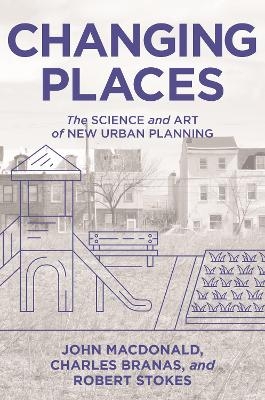
Changing Places
The Science and Art of New Urban Planning
Seiten
2022
Princeton University Press (Verlag)
978-0-691-23443-4 (ISBN)
Princeton University Press (Verlag)
978-0-691-23443-4 (ISBN)
How the science of urban planning can make our cities healthier, safer, and more livableThe design of every aspect of the urban landscape-from streets and sidewalks to green spaces, mass transit, and housing-fundamentally influences the health and safety of the communities who live there. It can affect people's stress levels and determine wheth
How the science of urban planning can make our cities healthier, safer, and more livable
The design of every aspect of the urban landscape—from streets and sidewalks to green spaces, mass transit, and housing—fundamentally influences the health and safety of the communities who live there. It can affect people's stress levels and determine whether they walk or drive, the quality of the air they breathe, and how free they are from crime. Changing Places provides a compelling look at the new science and art of urban planning, showing how scientists, planners, and citizens can work together to reshape city life in measurably positive ways.
Drawing on the latest research in city planning, economics, criminology, public health, and other fields, Changing Places demonstrates how well-designed changes to place can significantly improve the well-being of large groups of people. The book argues that there is a disconnect between those who implement place-based changes, such as planners and developers, and the urban scientists who are now able to rigorously evaluate these changes through testing and experimentation. This compelling book covers a broad range of structural interventions, such as building and housing, land and open space, transportation and street environments, and entertainment and recreation centers.
Science shows we can enhance people's health and safety by changing neighborhoods block-by-block. Changing Places explains why planners and developers need to recognize the value of scientific testing, and why scientists need to embrace the indispensable know-how of planners and developers. This book reveals how these professionals, working together and with urban residents, can create place-based interventions that are simple, affordable, and scalable to entire cities.
How the science of urban planning can make our cities healthier, safer, and more livable
The design of every aspect of the urban landscape—from streets and sidewalks to green spaces, mass transit, and housing—fundamentally influences the health and safety of the communities who live there. It can affect people's stress levels and determine whether they walk or drive, the quality of the air they breathe, and how free they are from crime. Changing Places provides a compelling look at the new science and art of urban planning, showing how scientists, planners, and citizens can work together to reshape city life in measurably positive ways.
Drawing on the latest research in city planning, economics, criminology, public health, and other fields, Changing Places demonstrates how well-designed changes to place can significantly improve the well-being of large groups of people. The book argues that there is a disconnect between those who implement place-based changes, such as planners and developers, and the urban scientists who are now able to rigorously evaluate these changes through testing and experimentation. This compelling book covers a broad range of structural interventions, such as building and housing, land and open space, transportation and street environments, and entertainment and recreation centers.
Science shows we can enhance people's health and safety by changing neighborhoods block-by-block. Changing Places explains why planners and developers need to recognize the value of scientific testing, and why scientists need to embrace the indispensable know-how of planners and developers. This book reveals how these professionals, working together and with urban residents, can create place-based interventions that are simple, affordable, and scalable to entire cities.
John MacDonald is professor of criminology and sociology at the University of Pennsylvania. Charles Branas is the Gelman Professor and chair of the Department of Epidemiology at Columbia University. Robert Stokes is associate professor and chair of the Master of Public Policy Program in the School of Public Service at DePaul University.
| Erscheinungsdatum | 13.05.2022 |
|---|---|
| Zusatzinfo | 33 b/w illus. 4 tables. 3 maps. |
| Verlagsort | New Jersey |
| Sprache | englisch |
| Maße | 156 x 235 mm |
| Themenwelt | Naturwissenschaften ► Geowissenschaften ► Geografie / Kartografie |
| Recht / Steuern ► Strafrecht ► Kriminologie | |
| Technik ► Architektur | |
| ISBN-10 | 0-691-23443-4 / 0691234434 |
| ISBN-13 | 978-0-691-23443-4 / 9780691234434 |
| Zustand | Neuware |
| Informationen gemäß Produktsicherheitsverordnung (GPSR) | |
| Haben Sie eine Frage zum Produkt? |
Mehr entdecken
aus dem Bereich
aus dem Bereich
über eine faszinierende Welt zwischen Wasser und Land und warum sie …
Buch | Hardcover (2023)
dtv (Verlag)
24,00 €
Buch | Hardcover (2024)
Schweizerbart'sche, E. (Verlag)
24,00 €


